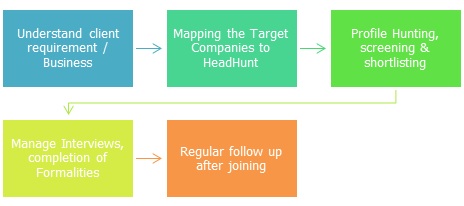Headhunting - Definition, Types, Process & Example
What is Headhunting?
Headhunting is a process of recruitment of a prospective employee, who is working elsewhere and who has a relevant work experience for a particular job profile. Headhunting is carried out by the HR of a company or is outsourced to an agency or job consultant. Headhunting is one of the most effective methods for sourcing & getting candidates for top positions, who might not necessarily look for a job change.
Organizations in many cases look for people with good amount of experience or professional competency to join the organization. They may not be able to post the job vacancy directly due to maintenance of confidentiality. Further, they may not want to be dependent on the job boards, or on people seeking out for employment. Headhunting is suitable in these cases. Thus, we see that Headhunting works on a certain time frame to find the top management executives as the organization demands
Recruiters resort to headhunting when they find:
1. Certain position/designations lying vacant and nobody interesting applied,
2. When they are looking for certain niche skills(competencies) and don’t want to waste their time placing ads where unworthy candidates would apply for,
3. When a certain position is rather confidential and they don’t want to list it publicly on the market. Example, certain strategic roles, position that requires making tactical decisions.
Types of Headhunting
There are 3 types of Headhunting:
1. Direct
It is a method of calling the candidates directly, either by calling on his/her number, or else meeting them at their homes or at their office. This is done after entire research has been done upon that person, and the role he is being hired for.
2. Indirect
Leaving a reference for the person to be headhunted, so that he may contact, in case he is willing. This is indirect because the person would contact on his/her own if they find the job profile fit for one's career.
3. Third Party
This is where the Executive search firms come in. The process of headhunting is outsourced to a company which specializes in finding right candidates for required job roles.
Headhunting Process
The head hunting process has the following steps:
1. Understanding the client's needs in what they want exactly in terms of experience, skills and qualifications along with job description.
2. Then the next step is to find relevant candidates working in similar roles and profiles who might be willing to move or switch.
3. Once there is a pool of candidates, screening and shortlisting process is done to make sure only right candidates are selected for next rounds with the company.
4. Selection processes like interviews and discussions are completed along with formalities
5. Joining of the candidate
6. Follow up to make sure that the candidate was actually the right fit and the process worked fine.

The Headhunting procedure
Headhunting Example
If any HR manager finds that some “star resources” left in the sales department & some roles are missing in the organization or a particular unit like Area Sales Manager and Regional head. The HR manager will try to search the market for options to replace. It may so happen than the competency set may not be found easily as these roles are senior leadership roles.
In that case, the HR manager would try to contact any headhunting agency to scan through people of other organizations, or from other sources, to try to find out a better match. The basic idea is that the pool is already narrowed to a few people, & recruitment happens through the best among them.
Hence, this concludes the definition of Headhunting along with its overview.
This article has been researched & authored by the Business Concepts Team. It has been reviewed & published by the MBA Skool Team. The content on MBA Skool has been created for educational & academic purpose only.
Browse the definition and meaning of more similar terms. The Management Dictionary covers over 1800 business concepts from 5 categories.
Continue Reading:
What is MBA Skool?About Us
MBA Skool is a Knowledge Resource for Management Students, Aspirants & Professionals.
Business Courses
Quizzes & Skills
Quizzes test your expertise in business and Skill tests evaluate your management traits
Related Content
All Business Sections
Write for Us